
Complete Guide to Mortgages: Everything You Need to Know
Your comprehensive guide to understanding mortgages. Learn about mortgage types, deposits, fees, and expert tips to get your mortgage approved.

Property Consultant
Quick Navigation
Mortgage Basics
Mortgage Types
Application Process
Properties are expensive and therefore usually require homeowners to borrow funds from banks in return for interest. As you pay back your loan, you gain equity in the house until, at the end of the mortgage term, you fully own the home. Typically, the more you pay as a deposit up front, the less interest and principle you pay and the more of the home you own. When buying a home you will most likely need a mortgage unless you are lucky enough to be a cash buyer. So, we've created a guide to mortgages to help you understand what a mortgage is, what you should consider before applying for one and tips to help you get your mortgage approved.
What is a Mortgage?
Mortgages are a type of loan that is used to finance the purchase of a property. The loan is secured against the value of the property. To get a mortgage you must apply and meet certain requirements to get it accepted.
Mortgages are offered by banks, building societies and other financial institutions. The amount you can borrow, and the interest rate you'll pay, will depend on factors like your income and credit history. Payments are usually paid monthly to the lender.
It's important to compare mortgages to make sure you get the best deal for your circumstances. This is because mortgages can be expensive, and you could be paying back your mortgage for several decades.
What to Consider Before Applying for a Mortgage
When you're looking for a mortgage, there are a few things you need to take into consideration:
- How much can you afford to borrow?
- What deposit do you have?
- What type of mortgage would suit your circumstances?
- What are the fees and charges associated with the mortgage?
- What is the interest rate?
- Are there any special features or deals available?
Now let's take a more in-depth look at each of these points.
How Much Can You Afford to Borrow?
The first thing you need to do is work out how much you can afford to borrow. This will depend on your income, expenditure and any other debts you have. Secondly, it's important to be realistic when working out how much you can afford to borrow, as you don't want to end up in a situation where you can't make the payments.
Our mortgage affordability calculator can help you get an estimate of how much you might be able to borrow based on your income and circumstances.
What Deposit Do You Have?
The deposit is the amount of money you'll need to put down when you take out the mortgage. The deposit is usually a percentage of the property's value.
The minimum percentage deposit is 5% but you can choose to go higher than this. A lot of people choose to do a 10% deposit as it is a reasonable deposit to try and save and it will provide you with better mortgage options than 5%.
Deposit Options Comparison
What Type of Mortgage Suits Your Circumstances?
There are two main types of mortgages: repayment mortgages and interest-only mortgages. Repayment mortgages are where you make monthly repayments that cover both the interest and the capital, so you gradually reduce the amount of money you owe. However, with an interest-only mortgage, you only make monthly repayments that cover the interest, so the amount you owe doesn't go down during the term of the mortgage.
The mortgage that you require also depends on the type of buyer you are:
First Time Buyer
First time buyers may have specialist products designed to make buying a home easier with smaller deposits – these are often slightly more complex than other mortgages.
Explore First-Time Buyer Mortgages →Remortgage Buyer
If you already have a mortgage then you may be able to switch provider to get a better deal. Your mortgage term may also be coming to an end so it's time to start looking for a new one.
Compare Remortgage Deals →Buy-to-Let Buyer
If you are looking to purchase a house as an investment then a buy-to-let mortgage is what you'll need. This includes having tenants and renting the property out.
Find Buy-to-Let Mortgages →Mortgage Types
Fixed Rate Mortgage
Fixed mortgages offer a level of security because they offer a fixed interest rate which protects you from interest rate rises. They are usually 2-10 year fixed products.
Standard Variable Rate (SVR)
This is the default rate mortgage that you will be moved onto when your initial deal ends. This is usually the most unfavourable deal so you should shop around if your current term ends.
Discounted Variable Rate
A discount mortgage is an example of variable-rate mortgage, which means that your interest rate and repayment could change month-to-month. The interest rate is usually discounted below the SVR.
Tracker Mortgage
This mortgage product usually 'tracks' a few percentage points higher than the rate that banks borrow from the Bank of England – this is called the base rate.
Offset Mortgage
With this product you can offset your savings against your mortgage borrowing which can lower the interest rate. This is effective when your savings earn less than the rate of your mortgage.
Interest-Only Mortgage
You only need to pay the interest charged on an interest-only mortgage. This reduces the amount that you pay monthly but leaves an outstanding balance at the end of the repayment period. This will need to be provisioned for.
Fees Associated with a Mortgage
When you're taking out a mortgage, there are a few different fees and charges that you need to be aware of:
Common Mortgage Fees
Not all mortgage lenders will make you pay all these fees, for example some lenders will pay to have the valuation done for you. You can read more about mortgage fees in our comprehensive guide on what costs are involved in buying a home.
Tips to Help with Your Mortgage Approval
There are things you can do which will help your chances of getting a mortgage. These tips are:
Check your credit report and see if you can improve your score - you can find this information on Experian and Equifax
Pay any bills you have on time to maintain a good credit history
Register to vote – being on the electoral roll will allow the lender to confirm your identity
Have all your documents ready such as bank statements and ID
Try to cut down on your spending – to show the lender you can afford to make the payments
Pay off your debts if possible to improve your debt-to-income ratio
Have evidence of your deposit showing you have the funds available
Summary
Hopefully this guide to mortgages has helped you understand what a mortgage is and that you now have some tips to help you get your mortgage approved. Understanding the different types of mortgages, fees involved, and preparation required will put you in the best position to secure a great deal.
Remember that every situation is unique, and what works for one person may not be the best option for another. Consider speaking with one of our qualified mortgage advisors who can provide personalised advice based on your specific circumstances.
If you would like to read about the application process and how to do that, you can read our blog post 'A guide to applying for a mortgage'.

Ready to Get Started?
Join thousands of homeowners who trust us for their mortgage needs. Get fee-free advice and save time and money.
 Trusted by 10,000+ homeowners
Trusted by 10,000+ homeowners




